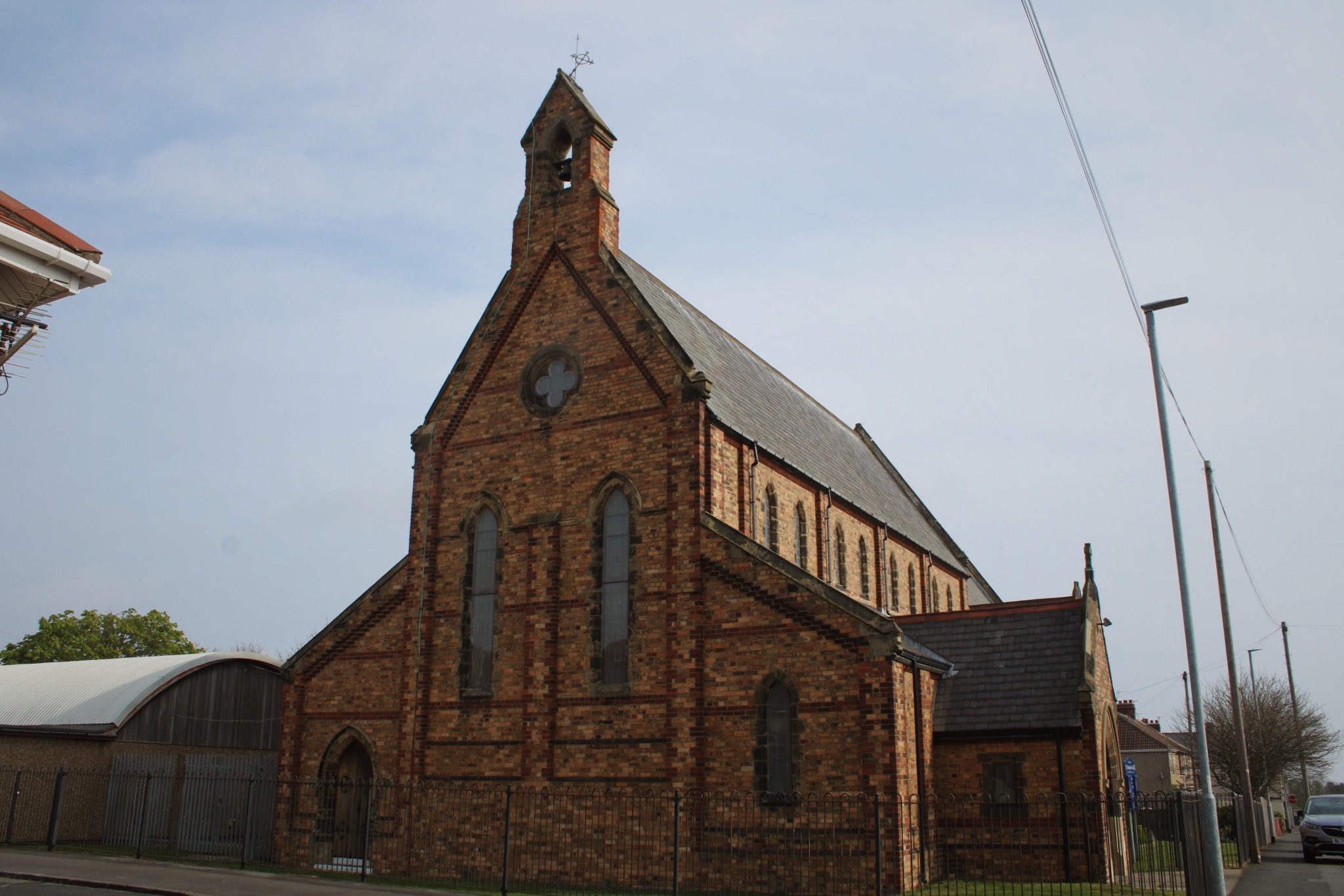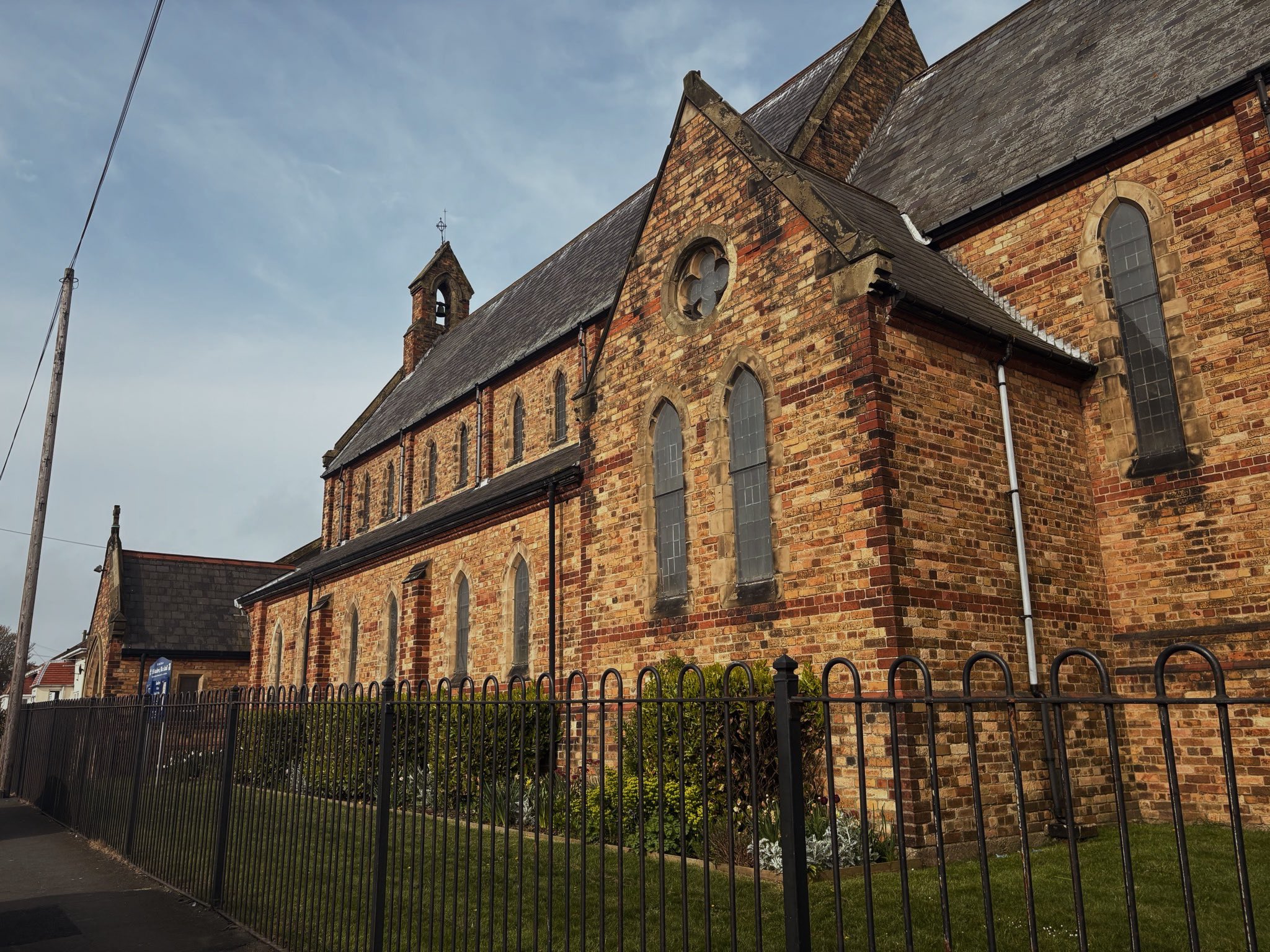
Blackhall Colliery
St Andrews Church, Blackhall Colliery
Last Updated:
19 May 2025
Blackhall Colliery
This is a
Church, Place of Worship
54.747123, -1.290804
Founded in
Current status is
Extant
Designer (if known):
James P Pritchett Jr

Serving as the parish church
I’m a massive fan of brick churches, which makes St Andrews the absolute holy grail. Its decorative banding and dark vanilla bricks make for a delight among many, but this possibly has one of the most unique stories among any modern Durham place of worship. Meet the “inside out church”.
This one became the parish church in the very late 1920s, reflecting the changing population centres on the Durham Coast. Curiously this building didn’t originally stand here first, and was brought over to serve the people of Blackhall from Stockton.
It was originally constructed in 1885 near Stockton’s railway station and was named St Paul’s, to serve a fast growing industrial congregation on the Tees. The Early English style, juxtaposed with its cream Normanby bricks (which makes for a beautiful summation of the 19th century North) came from the mind of the Darlington diocesan architect James P Pritchett. He also designed St Nicholas on Durham Market Square as well as the restoration of St Cuthbert’s at Darlington.
It became redundant in the 1920s due to changes of the parish boundaries. As a result, after around 4 years the parish of Castle Eden claimed the church which would in turn save money but also save this glorious church. Each brick was dismantled one by one, taken in a truck 16 miles north and reconstructed on Hesleden Road.
The bricks however were incredibly dirty thanks to the blanket of soot covering Stockton. Some 4 decades of service resulted in the builders, Messrs Gradon of Durham, turning the bricks so the clean side was now on the exterior. This gave the impression of an entirely new build, and is how it came to gain the nickname. The total cost of the build was £2400, making a huge saving against a totally new build.
Listing Description (if available)


Blackhall Colliery has only really existed in its current form for about a century. The collieries totally transformed this whole landscape, not just regarding the towering winding engines and conveyors but the literal formation of new villages which still stand. The maps are descending back in time here, with the 1940s map the first to show the church on what we would say is a complete plan of Blackhall. But only 20 years prior, the village was still in its fundamentals. The Hardwick Hotel underpins the village, but no cinema nor churches. Hardwick Blue House was the oldest structure in the village which partially remains today

Using the Blue House as a reference, we see little familiarity to the area today. The whole area was farmed, surrounding by dene's and gill's making it a fairly serene beauty spot. Before the bridge over Castle Eden Burn, folk with wagons would be forced to either cross a ford at Dene Holm, the rickety Dungy Bridge or actually make their way back to Castle Eden.

St Andrew's west elevation in April 2025

The glorious dark vanilla bricks with red banding and buttresses in April 2025
